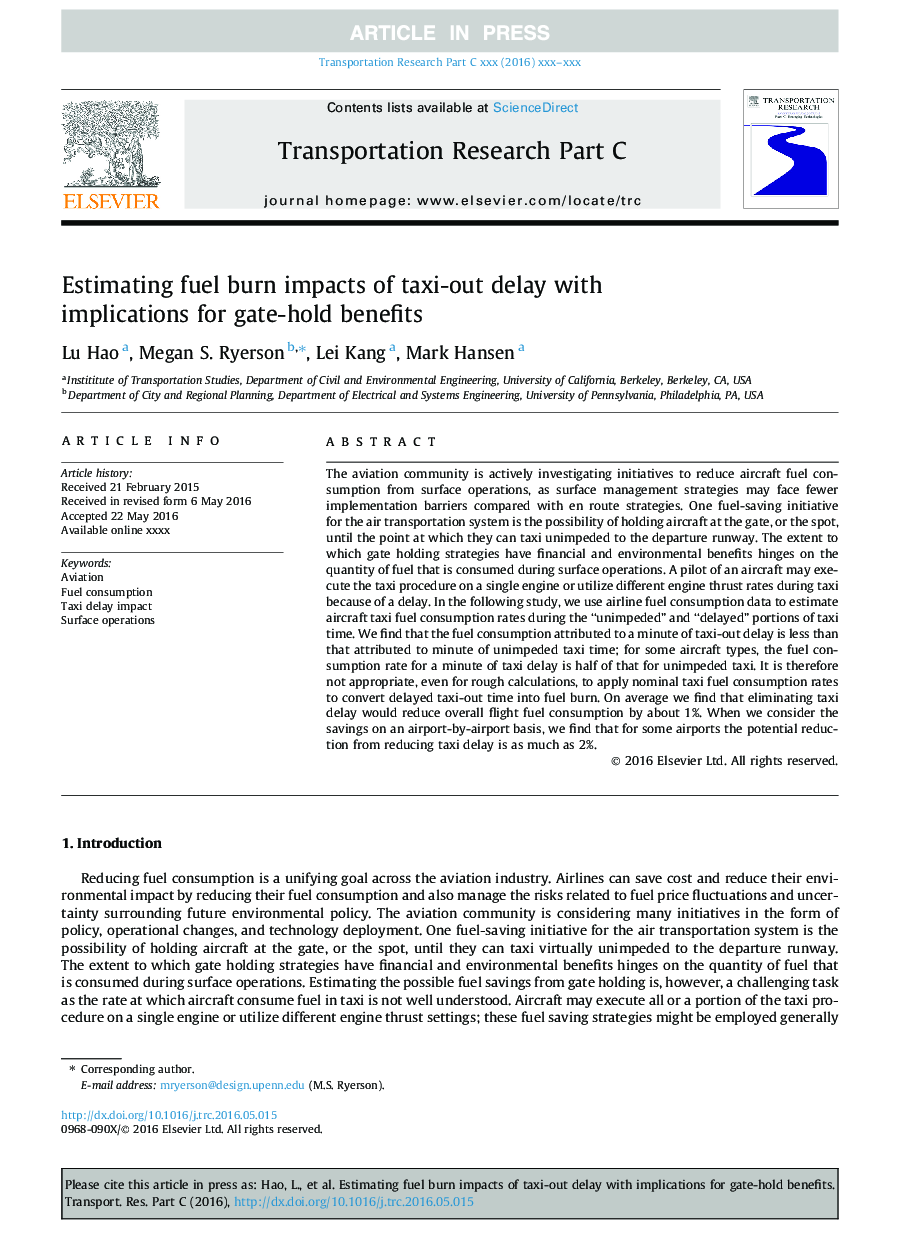| Article ID | Journal | Published Year | Pages | File Type |
|---|---|---|---|---|
| 4968441 | Transportation Research Part C: Emerging Technologies | 2017 | 13 Pages |
Abstract
The aviation community is actively investigating initiatives to reduce aircraft fuel consumption from surface operations, as surface management strategies may face fewer implementation barriers compared with en route strategies. One fuel-saving initiative for the air transportation system is the possibility of holding aircraft at the gate, or the spot, until the point at which they can taxi unimpeded to the departure runway. The extent to which gate holding strategies have financial and environmental benefits hinges on the quantity of fuel that is consumed during surface operations. A pilot of an aircraft may execute the taxi procedure on a single engine or utilize different engine thrust rates during taxi because of a delay. In the following study, we use airline fuel consumption data to estimate aircraft taxi fuel consumption rates during the “unimpeded” and “delayed” portions of taxi time. We find that the fuel consumption attributed to a minute of taxi-out delay is less than that attributed to minute of unimpeded taxi time; for some aircraft types, the fuel consumption rate for a minute of taxi delay is half of that for unimpeded taxi. It is therefore not appropriate, even for rough calculations, to apply nominal taxi fuel consumption rates to convert delayed taxi-out time into fuel burn. On average we find that eliminating taxi delay would reduce overall flight fuel consumption by about 1%. When we consider the savings on an airport-by-airport basis, we find that for some airports the potential reduction from reducing taxi delay is as much as 2%.
Keywords
Related Topics
Physical Sciences and Engineering
Computer Science
Computer Science Applications
Authors
Lu Hao, Megan S. Ryerson, Lei Kang, Mark Hansen,
